MAGNOLIAS
By Lyn Edwards
The deciduous Magnolias originating mainly from temperate areas of South East Asia and a few from North America create a wonderful spectacle with their late winter-early spring flowering on bare branches on large shrubs and small trees. These are survivors of the dinosaur age with tepals rather than petals and are pollinated by insects, mainly beetles. Suitable for most temperate to cold areas these grow with few problems from pests and diseases.
An acid well drained soil with mulch to protect the shallow root system, regular watering and some protection from strong winds is all that is really required. Wind damages fragile flowers and hot dry winds in summer cause leaf burn. They do resent disturbance to the root system so under-planting should be done with care not to cause damage.The small woodland bulbs, Crocus, Galanthus, Trilliums, Bluebells and Eranthis thrive with the protection from the heat in summer here in Canberra.
Removing dead wood and branches in unwanted positions is the only pruning needed. Problems most likely to be encountered are the predations of possums and parrots at flowering time and then snails when the tree or shrub comes into leaf. In autumn the currawongs find the seed pods irresistible and can do considerable damage to the branchlets breaking off newly formed flower buds in the process.
The star magnolias, white and pink stellata varieties and the hybrids including Leonard Messel, Merrill and Waterlily are smaller more shrub like plants and are less damaged by wind at flowering than the larger saucer shaped flowers of soulangeanas and the newer hybrids with even larger flowers.
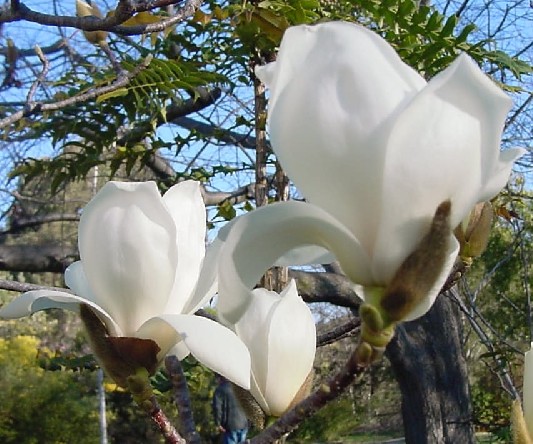
Magnolia denudata
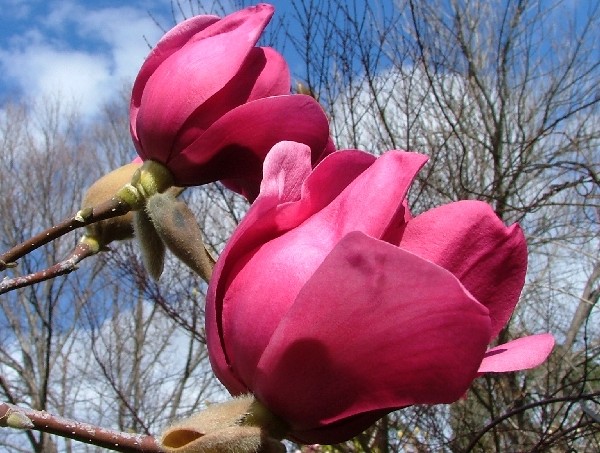
Magnolia Vulcan
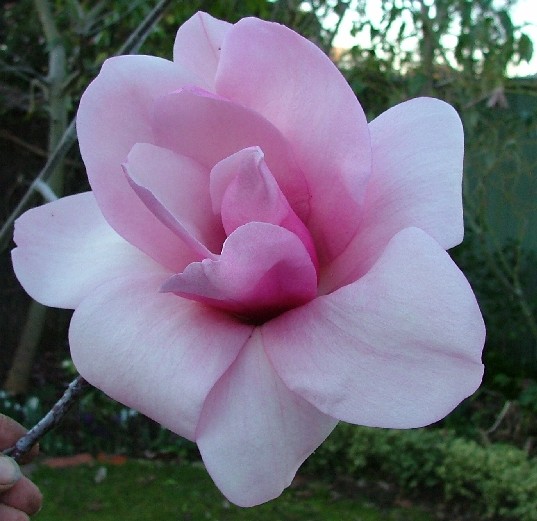
Magnolia Sweetheart
Magnolia denudata with its elegant white lemon scented flowers, Magnolia x soulangeana varieties and Magnolia liliflora make wonderful trouble free specimen trees. Of recent years a number of new cultivars from New Zealand and the USA have become available. The newer Magnolias have much to recommend them, they tend to flower at an earlier age, have more vigorous growth and many have very large flowers. Those listed below are some I have grown and can recommend.
Fast growing Heaven Scent makes a good specimen tree and produces masses of pink flowers in spring and spot flowers regularly through summer. Unfortunately it doesn’t live up to its name as it is not perfumed. Star Wars is also a vigorous growing cultivar with huge beautiful pale pink flowers. It is spectacular in flower and an excellent grower. If the garden has space for only one magnolia this would be the one I would suggest. Sweetheart is another beautiful pink but does need more protection from hot winds than the hardy Star Wars.
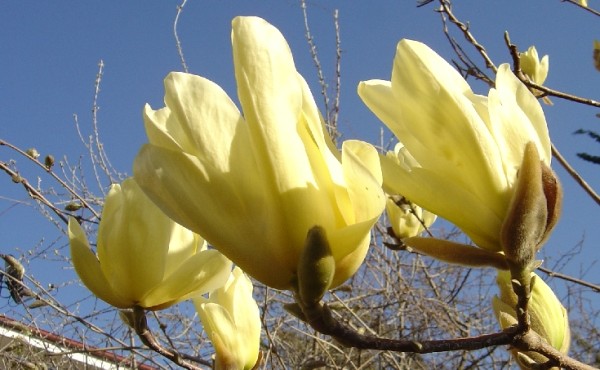
Magnolia Elizabeth
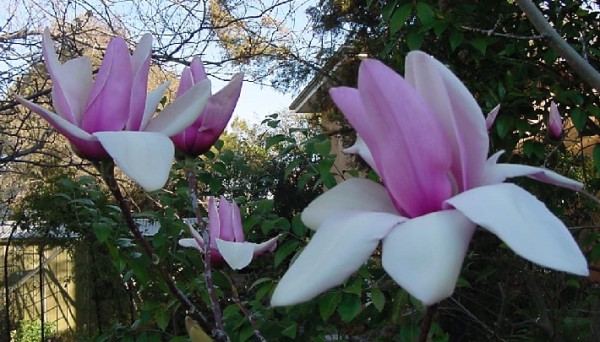
Magnolia Star Wars
One of the first yellow cultivars, though very pale, Elizabeth flowers later in the spring than many Magnolias and so escapes damage from spring frost .Yellow Bird has stronger colour but with smaller flowers opening with the leaves doesn’t have the same impact. Sayonara is a lovely white and Vulcan with its striking red luminescent flowers in sunlight is a firm favourite, very high on the “must have” list.
Something very different is Magnolia macrophylla, also deciduous, the leaves are enormous and so are the cabbage sized white flowers in early summer. This North American species is a larger tree than those previously mentioned.






